|

Marshal Massena
Armee de Norde
42,720 infantry
12,800 cavalry
72 artillery |
BATTLE OF BRANAU
APRIL 17, 1810
Campaign Blog
(Not for current players) |

Archduke Charles
Osterreichische Grossartige Armee
76,320 infantry
15, 040 cavalry
72 artillery |
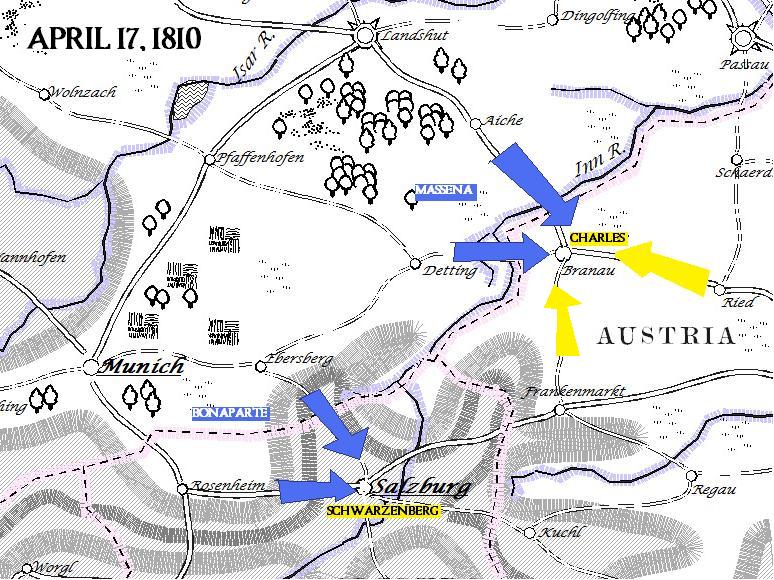
When Schwarzenberg and
Napoleon clashed at Munich on April 12th, Archduke Charles had his army in the
north and east of Bavaria, hoping to cover the approaches there. Following the
Battle of Munich, the French wings that had converged there parted, with Massena
striking north to seek a passage over the Inn River and Napoleon pursuing
Schwarzenberg toward that general's depot at Salzburg.
Charles meanwhile, who had almost made it to
Munich personally, spent the following few days dodging French advanced patrols
between the Isar and Inn Rivers. There were small engagements at Pfaffenhofen
and Detting and then, on the 14, the French drove in Alvinzi's forces at
Landshut, forcing them to retreat into the fortress. Through all of the small
battles though, the Austrians managed to escape the bulk of their army across
the Inn through Aiche and Passau.
Charles is still in the process of concentrating
his army at Branau when Marshal Massena's Armee de Norde attacked from both
Detting and Aiche.
By nightfall of the 16th, Massena had assembled the 1me Cavalry
Corps (Pajol) and the bulk of Ney's IV Corps on the battlefield,
giving him 27,000 troops.
Archduke Charles is there with two corps: II Korps, under
Hiller, is made up of Hungarians and is mostly Insurrection troops but
Radetzky's Liebe Garde Korps is a powerful array of Grenadiers and heavy
cavalry. He also has the remnants of the Erzhog Karl Legion that was roughly
handled at both Herrsching and Munich. This division had belonged to the Army of
Schwarzenberg but Charles assigns them to I Korps, which is expected to arrive
during the battle. Finally, there is a division of hastily raised militia
cavalry that had that day arrived from Salzburg. In total, the Austrians will
have more than twice the initial strength of the French.
Sent by
Armee Nord from Branau on April 16th 1810 to Imperial Headquarters
Sire, It looks like the Austrians plan on putting up a fight at Branau.
I am out numbered, but hope that my reinforcements will even things out
and that he doesn't have much in the way of added troops. |
The Austrians deploy with the Liebegarde in the center, north of
the Inn. Erzhog Karl legion is deployed in the village of Stubenberg to anchor
the far right. Hiller's II Korps is on the south bank of the river, assigned the
task of securing Branau and Waltersdorf.
Massena's small army fields the cavalry on the left and the
center will advance to engage the enemy in a straightforward manner.

The aggression of the Austrians is uncharacteristic. Radetsky's
grenadiers fairly sprint across the battlefield to slam into the French before
they can properly deploy and establish their intervals. When threatened by
cavalry, the veterans deftly form square and so a single brigade neutralizes
Pajol's corps.
First reinforcements have arrived for the French in the form of
the lead elements of V Corps.
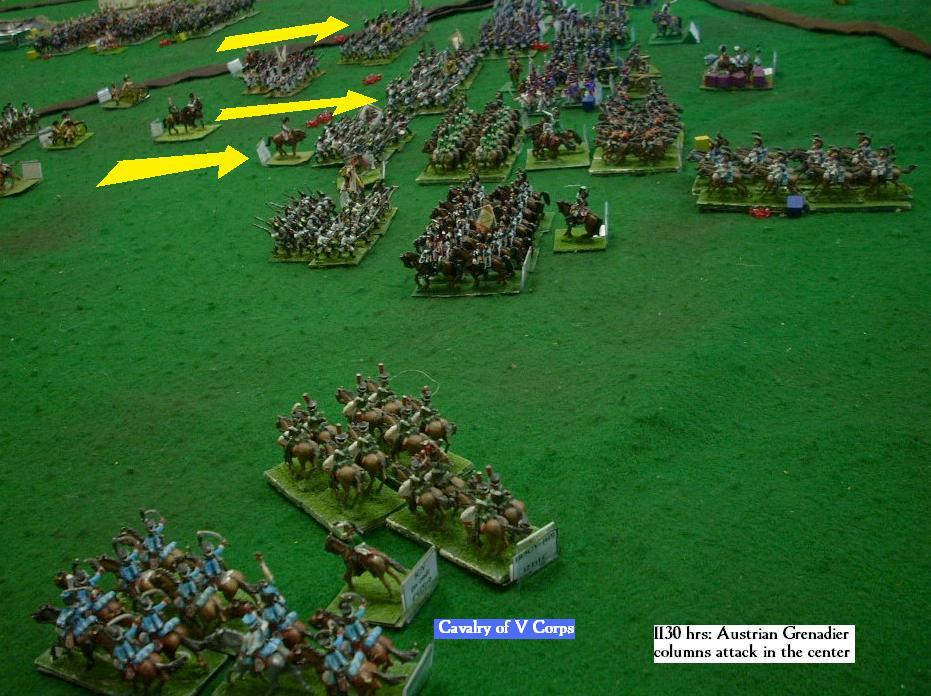
Ney's Corps is reeling from the initial aggression of the
grenadiers. The Austrians have outpaced their artillery though.
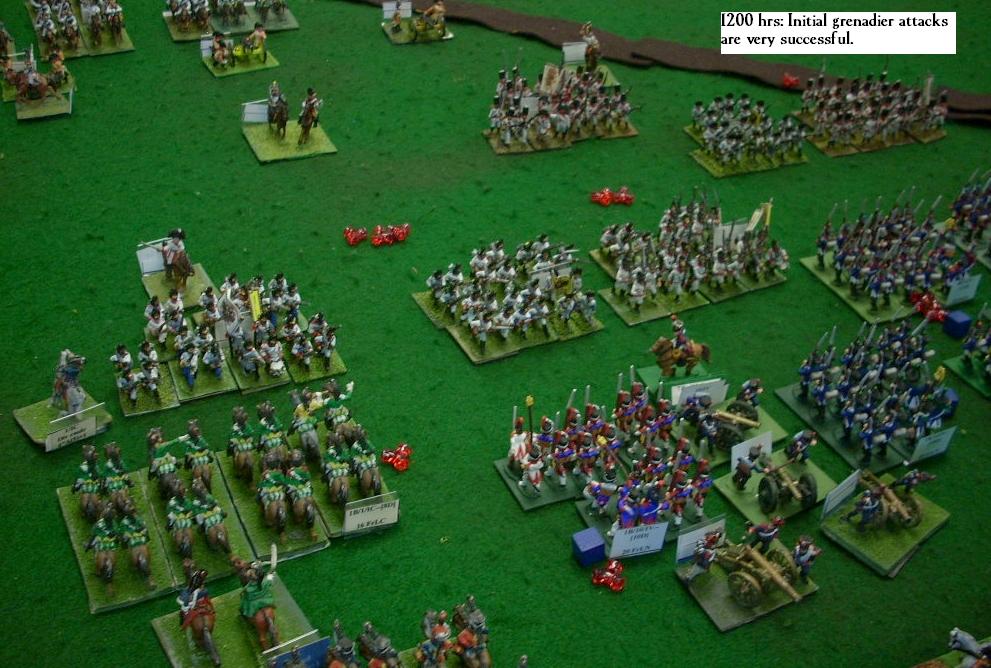
And for an hour or more the grenadiers continue to attack,
reaching to the I Cavalry Corps positions and capturing a General of Division.
Further stressing Massena's position, the Austrian I Korps has reached
Waltersdorf and is bring fire onto the exposed right flank of the French line.
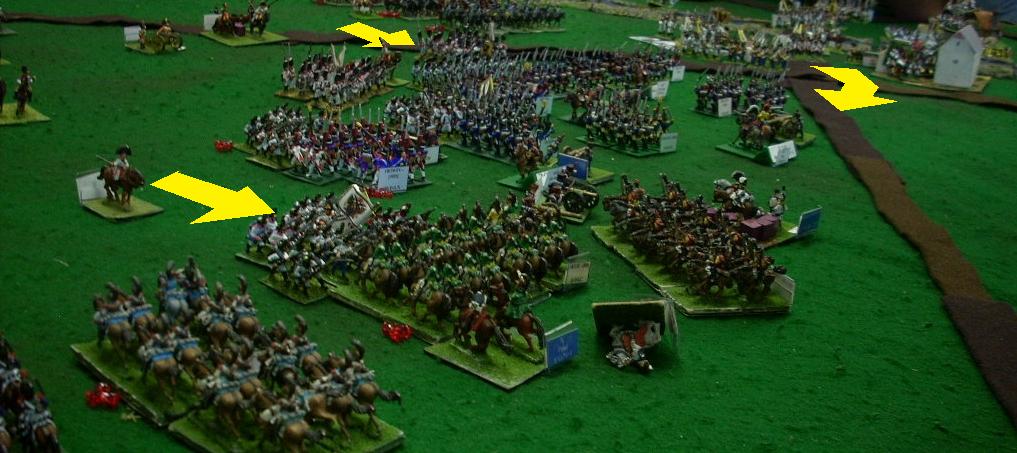
The remainder of V Corps arrived and advances quickly to try to
cover the left flank of the French battle line. Austrian reinforcements can be
seen to be approaching from Reid. The grenadier attack in the center has begun
to stall and brigades that are routed back to behind the gun line are rallied
and formed into defensive lines.
On the far left, the light cavalry of Moreau brazenly mixes it
up with the heavy cavalry of Radetzky and does not come off entirely badly.
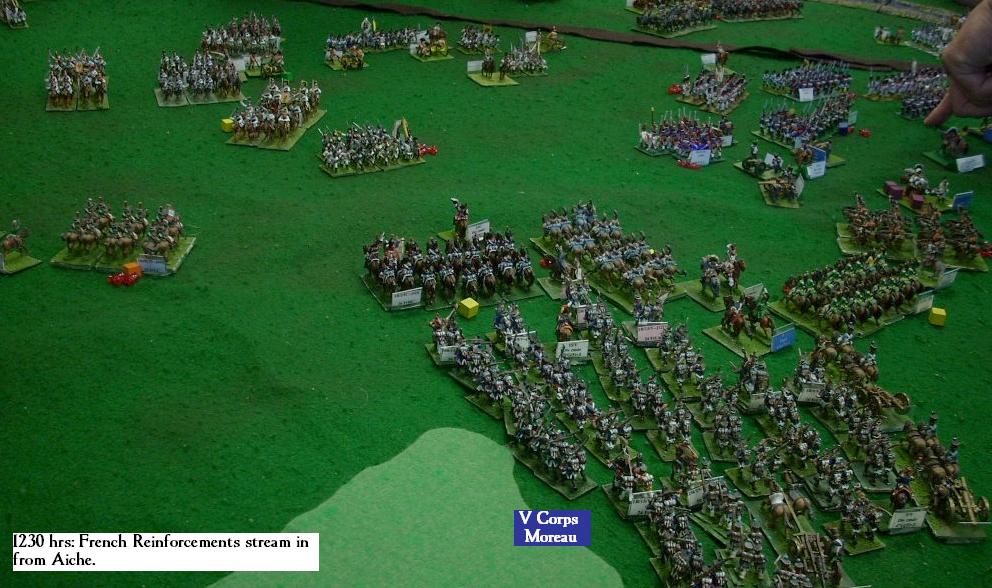
Ney's Corps, still trying to stabilize against the grenadiers to
their front, does not have the resources to face the Grenzers from Hiller's
Korps.

With the arrival of Lindenau's Korps, almost the whole of
Charles' army is present and has massive numerical superiority. Ney's Corps is
stressed toward breaking point but somehow manages to hold the line.
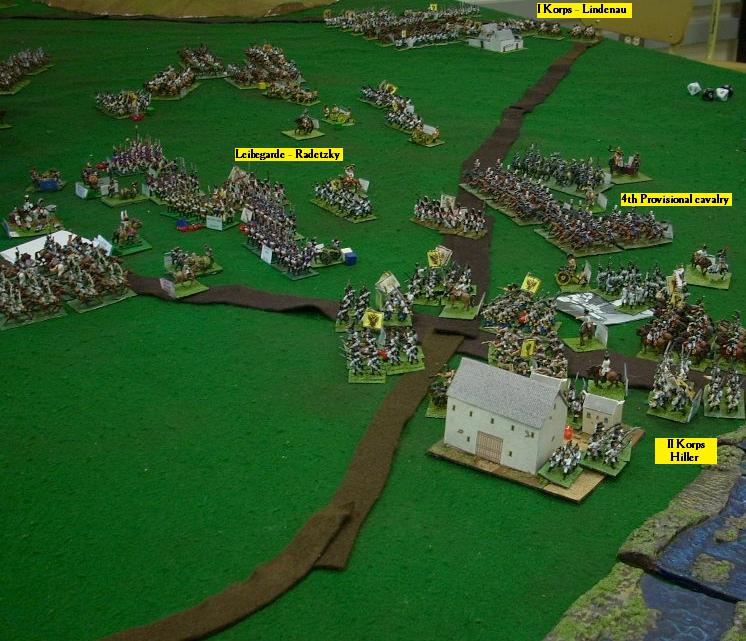
The French cavalry brigades in the center and the Austrian
Landwehr cavalry make charge after charge in support of their infantry. As the
attack of the grenadiers slackens, Ney is able to commit his rallied troops to
the right to oppose the advance of the Hungarian Korps through Waltersdorf.
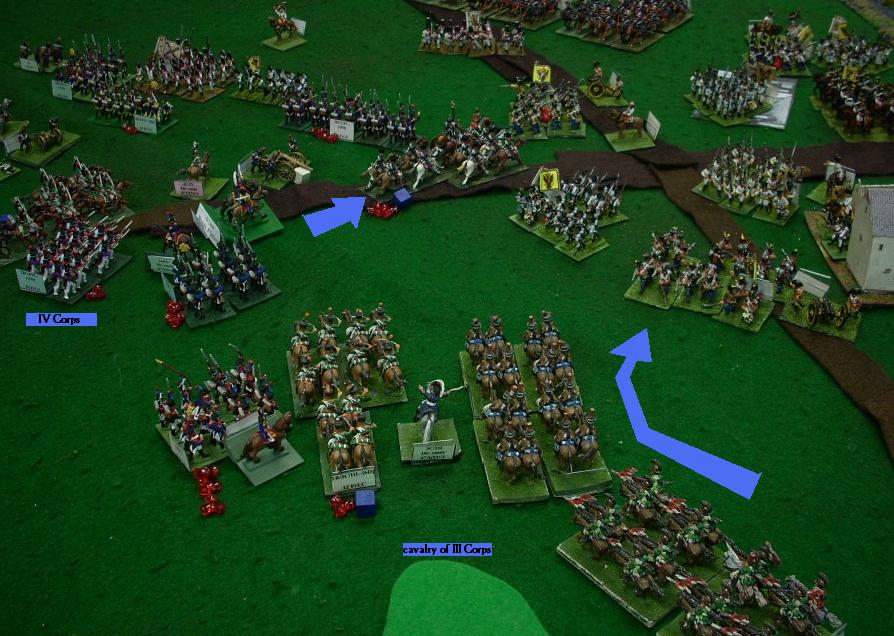
On the far left of the French line, V Corps' advance is slowed
because they are using divisional squares due to the threat of the 6000 Austrian
heavy cavalry.
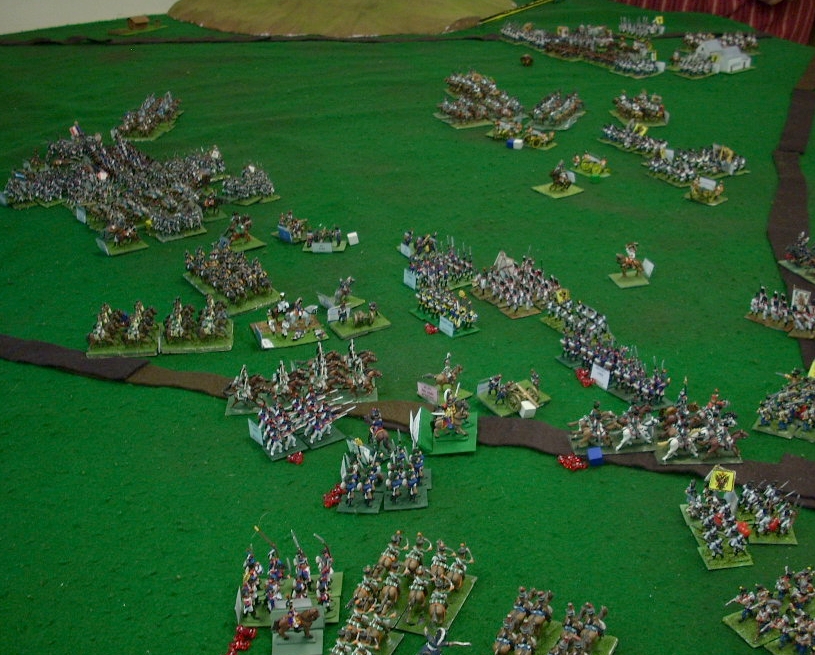
Opposing reinforcements square off to take up the slack as the
units in the center begin to separate.
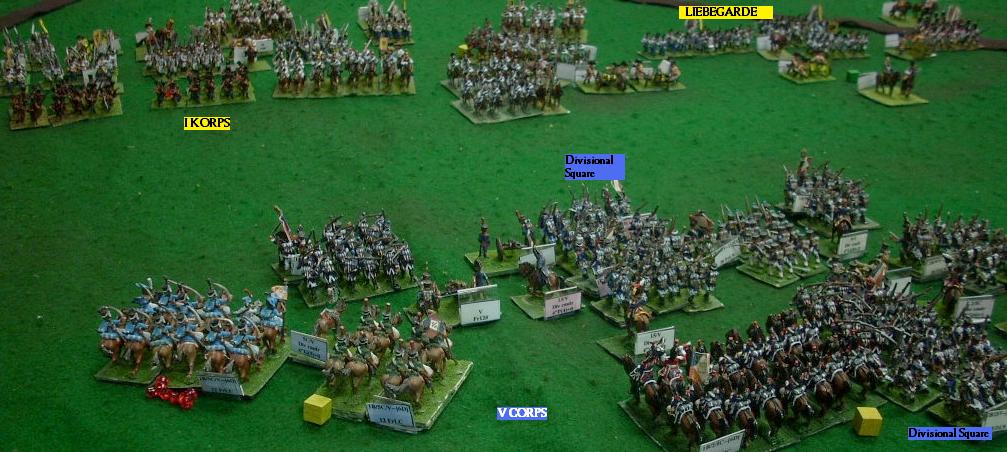
As IV Corps goes on the offensive against Waltersdorf, a large
mass of routed Austrians begins to form on the riverbank.
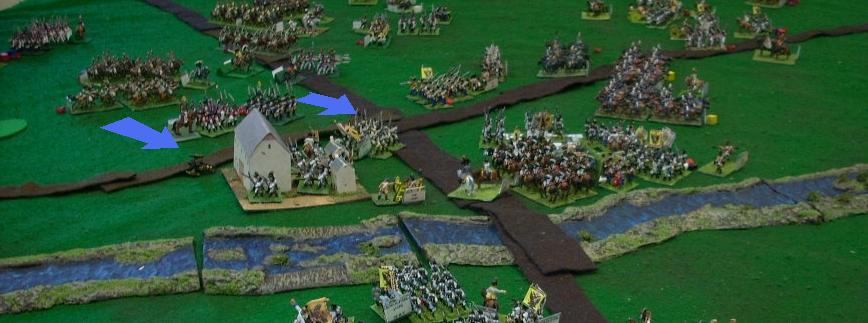
French chasseurs from III Corps manage a breakthrough and are
able to ride into the routing, milling masses. Their sabre arms grow weary of
the work as four brigades are sent fleeing and swimming for their lives across
the Inn.

The fight in the center winds down to consist of long range
artillery fire. The French are exhausted and Ney's Corps is incapable of making
any more advances but the grenadiers and II Korps do not have time to make
another attack against them before nightfall.
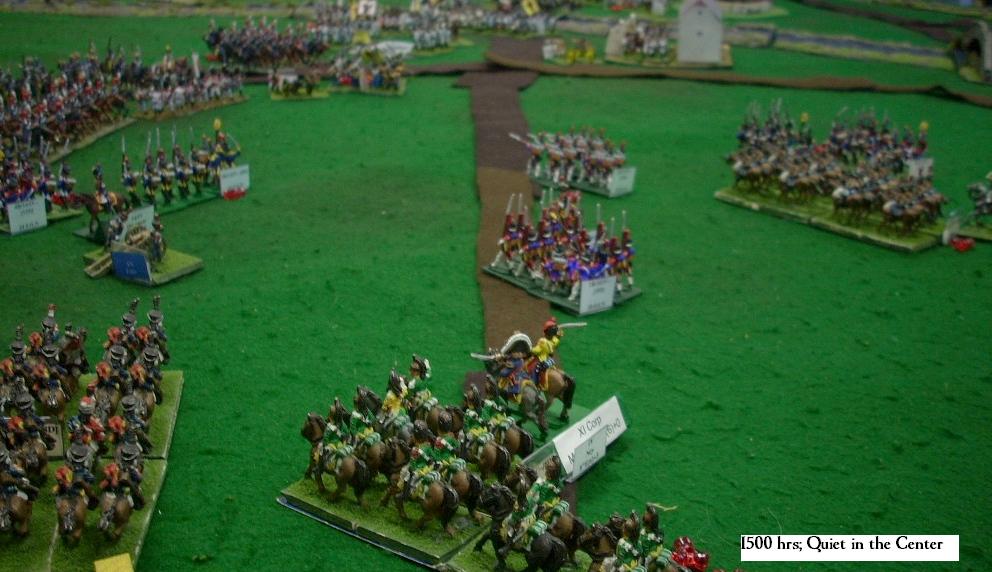
In the north, the two fresh corps come to grips and for the few
hours remaining before the end of daylight, they exchange bayonet pleasantries.
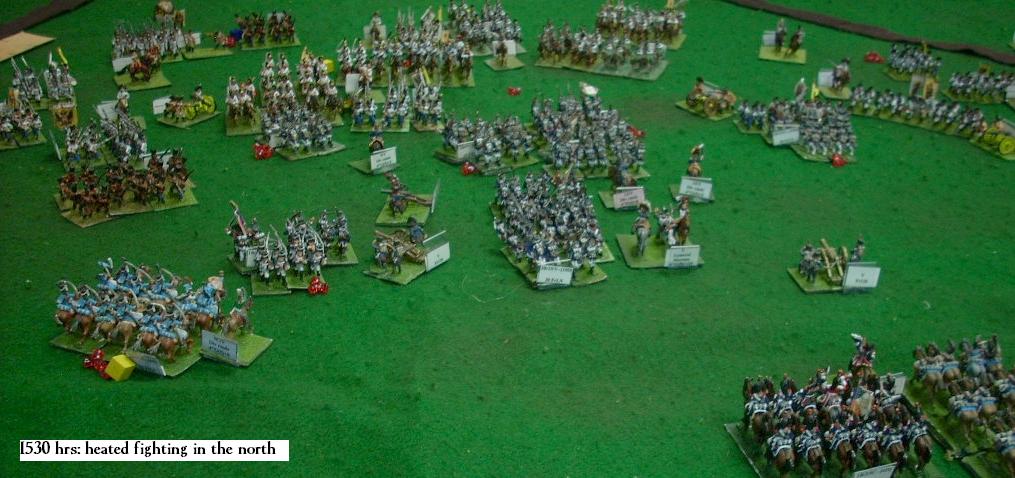
Massena, though he has a fresh corps possibly coming from
Salzburg, cannot ask his shattered IV Corps to fight another day. Reluctantly,
he orders the army to withdraw toward Detting. The retreat is made in good
order.
















